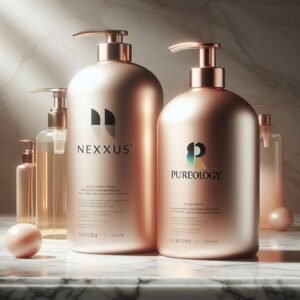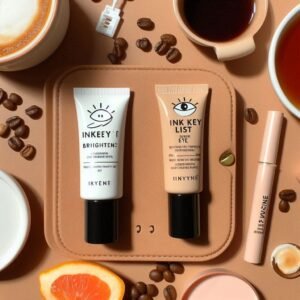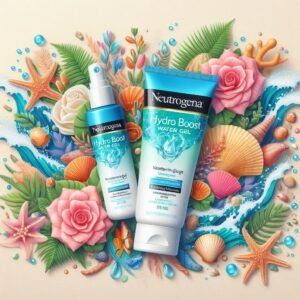Aquaphor Vs Neosporin 2024 – As you navigate the world of wound care and skin health, you’ve likely come across two popular ointments: Aquaphor and Neosporin. You might be wondering which one is best for your specific needs, but it’s not always a clear-cut decision. Both products have their strengths, but they cater to different concerns.
You’re probably curious about what sets them apart and how to choose the right one for your skin type, wound severity, and personal preferences. Let’s explore the unique benefits and drawbacks of each ointment, and discover how to make an informed decision that supports your skin’s peak health and healing.
A Quick Overview
- Aquaphor’s petrolatum-based formula provides long-lasting moisture and protection, making it ideal for dry, damaged skin and minor cuts and scrapes.
- Neosporin’s triple antibiotic ointment is effective in preventing infection and combating a broad spectrum of bacteria in minor wounds.
- Aquaphor’s gentle, non-antibiotic approach reduces the risk of bacterial resistance, while Neosporin’s antibiotic properties can contribute to resistance over time.
- The choice between Aquaphor and Neosporin depends on skin type and needs, with Aquaphor suited for dry skin and Neosporin better for preventing infection.
- Both products have high overall ratings, but Aquaphor edges out Neosporin in user satisfaction, particularly for soothing eczema-prone skin.
Understanding Aquaphor Ingredients

When you crack open a tube of Aquaphor, you’ll find a unique blend of ingredients working together to provide long-lasting moisture and protection for your skin.
At the heart of Aquaphor’s formula is petrolatum, a type of petroleum jelly that helps to lock in moisture and protect your skin’s natural barrier.
This creates an ideal environment for your skin to heal and regenerate, making it an effective solution for dry, cracked, or irritated skin.
The petrolatum in Aquaphor also helps to strengthen your skin barrier, reducing the risk of further irritation and promoting healthy, resilient skin.
Breaking Down Neosporin Ingredients
You’re likely familiar with Neosporin’s reputation for fighting infection and promoting healing, but what exactly makes up its formula that allows it to do so effectively?
Let’s break down the ingredients behind this trusted brand. Neosporin’s triple antibiotic ointment contains a combination of neomycin, bacitracin, and polymyxin B.
These antibiotics work together to combat a broad spectrum of bacteria, including streptococci, staphylococci, and E. coli.
Despite Neosporin myths, this formula has been a cornerstone of wound care for over 70 years, with a rich history dating back to the 1940s.
Comparing Moisturizing Properties
Your skin’s hydration levels can greatly impact the healing process, and that’s where the moisturizing properties of Aquaphor and Neosporin come into play.
As you consider these two ointments, you’ll want to know which one provides better moisturizing levels.
Aquaphor’s petrolatum-based formula creates a protective barrier that locks in moisture, providing long-lasting hydration to dry, damaged skin.
Neosporin, on the other hand, contains a blend of moisturizers, including glycerin and petrolatum, that help to hydrate and soothe the skin.
While both products offer some level of moisturizing, Aquaphor’s formula is more intense, making it a better choice for extremely dry or cracked skin.
When it comes to skin hydration, Aquaphor takes the lead, providing a more thorough moisturizing experience.
Antibacterial Properties Explained
As you consider the role of ointments in wound care, it’s equally important to examine the antibacterial properties of Aquaphor and Neosporin, since preventing infection is a critical step in the healing process.
When it comes to antibacterial properties, you want an ointment that packs a punch against germs.
Neosporin contains antibiotics like neomycin and bacitracin, which provide strong germ-killing power against a wide range of bacteria.
However, the overuse of antibiotics in Neosporin can contribute to bacterial resistance, making them less effective over time.
Aquaphor, on the other hand, uses a gentle, non-antibiotic approach to create an environment that’s not conducive to bacterial growth, reducing the risk of bacterial resistance.
Healing Process and Timeline
The pace at which your wound heals depends on the ointment’s ability to create an ideal environment for skin regeneration, and both Aquaphor and Neosporin have distinct approaches that impact the healing process and timeline.
Aquaphor’s breathable, hydrophilic formula creates a protective barrier that promotes wound closure rates by allowing oxygen to reach the affected area. This leads to faster healing and reduced scar tissue formation.
Neosporin, on the other hand, uses antibiotics to combat infection, which can slow down the healing process. While it’s effective in preventing infection, it may not accelerate wound closure rates as quickly as Aquaphor.
Understanding these differences is vital in choosing the right ointment for your wound, ensuring a faster and more effective healing process.
Wound Types and Applicability
When it comes to treating wounds, you need to weigh the type of wound you’re dealing with.
You’ll want to know whether Aquaphor or Neosporin is best suited for minor cuts and scrapes, or if one is more effective for deeper wounds and burns.
Understanding the differences in their applicability will help you make an informed decision about which product to use for your specific wound.
Minor Cuts and Scrapes
You’ll likely reach for either Aquaphor or Neosporin to treat minor cuts and scrapes, which account for the majority of everyday wounds. These types of wounds are often a result of kiddie accidents or summer scrapes.
When it comes to choosing between the two, consider the following:
Speed of healing: Aquaphor is known for its ability to accelerate the healing process, making it a great choice for minor cuts and scrapes.
Infection prevention: Neosporin, on the other hand, is excellent at preventing infection, which is vital for minor wounds that are prone to bacteria growth.
Moisturizing properties: Both products offer moisturizing properties, but Aquaphor is particularly effective at locking in moisture, promoting a healthy environment for wound healing.
Deep Wounds and Burns
For deeper wounds and burns, your treatment approach shifts from simply promoting healing to addressing more complex issues like tissue damage and risk of infection.
You’ll need to prioritize wound cleaning to remove debris and bacteria, reducing the risk of infection. This is pivotal, as deep wounds and burns are more prone to infection due to their size and severity.
When it comes to burn prevention, taking proactive measures is imperative, such as keeping flammable materials away from heat sources and being mindful of electrical safety.
Both Aquaphor and Neosporin can be effective in promoting healing and protecting the wound, but selecting the right product for your specific wound type is paramount.
Skin Irritation and Allergies
Your skin’s natural barrier can be disrupted by Aquaphor and Neosporin, leading to irritation and allergic reactions in some individuals. If you have skin sensitivities, you may experience adverse reactions to one or both of these products.
- Patch testing: Always perform a patch test before using Aquaphor or Neosporin on a larger area to identify potential allergic reactions.
- Monitor your skin: Watch for signs of irritation, such as redness, itching, or swelling, and discontinue use if you notice any of these symptoms.
- Consult a doctor: If you experience severe allergic reactions or if your skin irritation persists, consult a doctor or dermatologist for personalized advice.
Cost and Availability Comparison
When it comes to choosing between Aquaphor and Neosporin, cost and availability can be a significant deciding factor, as these two products vary in price and accessibility.
Both products are widely available at most pharmacies, including popular chains like CVS, Walgreens, and Rite Aid.
However, their prices differ slightly, with Aquaphor typically ranging from $10 to $20 and Neosporin usually costing between $5 to $15.
Insurance coverage also plays a role, as some plans may cover one product over the other.
Crucial to keep in mind is to check your insurance coverage before making a purchase.
Additionally, you can often find discounts and promotions online or through loyalty programs, making them more affordable.
User Reviews and Ratings
As you consider the best product for your skin, you’ll want to see what others have to say.
You’ll find that both Aquaphor and Neosporin have a significant number of reviews, with users sharing their experiences and opinions on their effectiveness.
Ratings Breakdown
You’ve likely scoured the internet for reviews from fellow users to get a sense of which product – Aquaphor or Neosporin – truly delivers on its promises.
Now, let’s delve into the ratings breakdown to get a better understanding of how these products stack up.
Rating systems: Both products have high overall ratings, with Aquaphor averaging 4.5/5 and Neosporin averaging 4.3/5.
Product reliability: Aquaphor is praised for its consistent performance, while Neosporin’s ratings vary depending on the specific product and application.
User satisfaction: Both products have a high percentage of satisfied customers, with Aquaphor edging out Neosporin in this regard.
User Experiences
Digging deeper into user experiences reveals a wealth of information, with many customers sharing their personal stories and opinions on the effectiveness of Aquaphor and Neosporin.
You’ll find that real-life scenarios play a significant role in shaping user opinions. For instance, parents who’ve used Aquaphor to soothe their child’s eczema-prone skin often rave about its effectiveness, while outdoor enthusiasts who’ve relied on Neosporin to protect cuts and scrapes from infection swear by its reliability.
Personal preferences also come into play, with some users preferring the thicker, more emollient texture of Aquaphor, while others like the lightweight, non-greasy feel of Neosporin.
Product Comparisons
When evaluating user reviews and ratings, it becomes clear that both Aquaphor and Neosporin have their own strengths and weaknesses, with some users giving Aquaphor high marks for its ability to provide long-lasting moisture, while others praise Neosporin for its effectiveness in preventing infection.
Product Reliability: Aquaphor is often praised for its consistency in providing long-lasting moisture, while Neosporin is commended for its effectiveness in preventing infection.
Brand History: Aquaphor’s reputation for providing high-quality skincare products is reflected in its positive reviews, while Neosporin’s long history of preventing infection has earned it a loyal following.
Personal Preferences: Ultimately, the choice between Aquaphor and Neosporin comes down to your personal skin type and needs – some users swear by Aquaphor’s moisturizing properties, while others rely on Neosporin’s antibacterial benefits.
Alternative Options for Wound Care
Beyond Aquaphor and Neosporin, several alternative options for wound care are available, offering varying degrees of protection, healing support, and antimicrobial properties.
You might consider using saline solution or sterile water for wound cleaning, which helps remove bacteria and debris.
Natural remedies like honey, aloe vera, and tea tree oil have antimicrobial properties that can aid in the healing process.
You can also look into hydrocolloid dressings, which create a protective barrier and promote a moist environment for healing.
Additionally, silver-based dressings have antibacterial properties that can help prevent infection.
These alternatives can be used alone or in combination with other products to create a personalized wound care routine that works best for you.
When to Use Each Ointment
You’re likely wondering which ointment to reach for in specific situations, so let’s break down the scenarios in which Aquaphor or Neosporin is the better choice.
Three key scenarios to ponder:
- Minor cuts and scrapes: For small, shallow wounds with minimal bleeding, Aquaphor is a great choice. Its moisturizing properties promote healing and protect the skin from dryness.
- Deep or infected wounds: When dealing with more severe wounds, Neosporin’s antibacterial properties can help prevent infection and promote healing.
- Skin irritation or dryness: If you’re experiencing skin irritation, redness, or dryness, Aquaphor’s soothing and moisturizing properties can provide relief.
Making an Informed Decision
With a clear understanding of the strengths of each ointment, it’s time to weigh the factors that will ultimately guide your decision between Aquaphor and Neosporin.
As you consider your options, remember that making informed choices depends on evaluating your specific needs.
Identify the primary concerns you want to address: is it wound protection, antibacterial properties, or skin hydration?
Consider your skin type, the severity of your wound, and any allergies or sensitivities you may have.
By examining these decision factors, you’ll be able to make an informed decision that aligns with your unique situation.
Don’t compromise on your skin health – take the time to weigh your options carefully and choose the ointment that best supports your well-being.
Frequently Asked Questions
Can I Use Aquaphor or Neosporin on My Pet’s Wounds?
When caring for your pet’s wounds, you’ll want to choose the right topical ointment for their specific skin type. Be cautious, as human products like Aquaphor or Neosporin might not be suitable for your pet’s sensitive skin, and consult your vet for personalized advice.
Are Aquaphor and Neosporin Safe for Use During Pregnancy?
When pregnant, you’re right to wonder if topical ointments are safe for you and your baby. Rest assured, both Aquaphor and Neosporin are generally considered safe during pregnancy, posing minimal fetal safety risks, but always consult your doctor to confirm.
Can I Mix Aquaphor and Neosporin for Enhanced Healing?
You can mix Aquaphor and Neosporin for a Healing Boost, creating a Wound Shield that protects and accelerates recovery. By combining their strengths, you’ll get enhanced protection, moisture-locking, and antibacterial benefits, but always follow the product instructions and consult a doctor if unsure.
Do Aquaphor and Neosporin Expire, and How Do I Store Them?
You’re right to worry about shelf life concerns; both Aquaphor and Neosporin have expiration dates. Always check the packaging for expiration dates and store them in a cool, dry place to maintain their potency.
Can I Use Aquaphor or Neosporin on Open Stitches or Sutures?
When caring for open stitches or sutures, you’ll want to follow proper suture care tips for ideal wound aftercare. Avoid using Aquaphor or Neosporin on open sutures, as they can interfere with the healing process; instead, follow your doctor’s specific guidance.
Conclusion
You now have a clear understanding of the distinct strengths of Aquaphor and Neosporin.
With Aquaphor, you’ll experience long-lasting moisture and healthy skin promotion, while Neosporin’s triple antibiotic ointment tackles a broad spectrum of bacteria.
By considering your specific wound type, skin needs, and personal preferences, you can make an informed decision on which ointment to use, ultimately supporting ideal skin health and wound healing.




